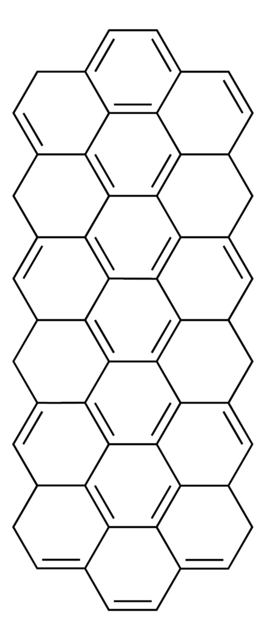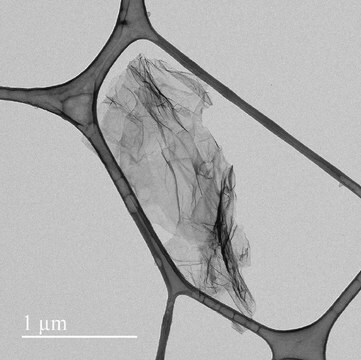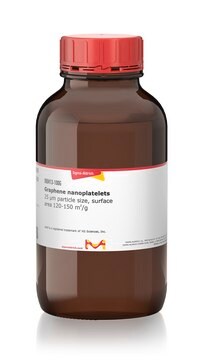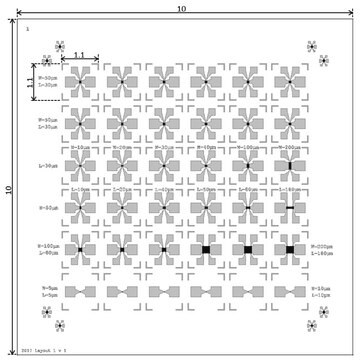추천 제품
일반 설명
Graphene nanoribbons (GNR) are narrow strips of graphene with abundant edges and high aspect ratio. The edge functionalization can alter the chemical properties of the GNR to afford them good dispersibility and strong interfacial interactions with various materials. Such properties have made GNR suitable for producing a variety of composites, particularly as conductive fillers that provide percolation at a comparatively small mass loading due to the high aspect ratio and high conductivity. GNR have been used in sensors, energyconversion/storage devices, and electrochemical, photochemical and thermoelectrical systems. They have also been intensively studied for biochemical and biological applications such as bioimaging, biosensing, DNA sequencing, and neurophysiological recovery.
애플리케이션
Graphene nanoribbons (GNR) made by reductive splitting of carbon nanotubes possess highly reactive edge carbon atoms. The carbanions have been passivated by methanol to yield this H-terminated graphene nanoribbons product. This reductively splitted graphene nanoribbons preserve high electrical conductivity, and enable them good candidates for electrodes in neurophysiological recording, conductive filler in batteries, and heater in de-icing devices.
신호어
Warning
유해 및 위험 성명서
Hazard Classifications
Eye Irrit. 2 - STOT SE 3
표적 기관
Respiratory system
Storage Class Code
11 - Combustible Solids
WGK
WGK 3
Flash Point (°F)
Not applicable
Flash Point (°C)
Not applicable
가장 최신 버전 중 하나를 선택하세요:
Kyle A Ritter et al.
Nature materials, 8(3), 235-242 (2009-02-17)
Graphene shows promise as a future material for nanoelectronics owing to its compatibility with industry-standard lithographic processing, electron mobilities up to 150 times greater than Si and a thermal conductivity twice that of diamond. The electronic structure of graphene nanoribbons
Melinda Y Han et al.
Physical review letters, 98(20), 206805-206805 (2007-08-07)
We investigate electronic transport in lithographically patterned graphene ribbon structures where the lateral confinement of charge carriers creates an energy gap near the charge neutrality point. Individual graphene layers are contacted with metal electrodes and patterned into ribbons of varying
Mohammad A Rafiee et al.
ACS nano, 4(12), 7415-7420 (2010-11-18)
It is well established that pristine multiwalled carbon nanotubes offer poor structural reinforcement in epoxy-based composites. There are several reasons for this which include reduced interfacial contact area since the outermost nanotube shields the internal tubes from the matrix, poor
자사의 과학자팀은 생명 과학, 재료 과학, 화학 합성, 크로마토그래피, 분석 및 기타 많은 영역을 포함한 모든 과학 분야에 경험이 있습니다..
고객지원팀으로 연락바랍니다.








